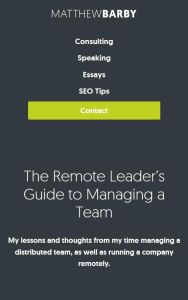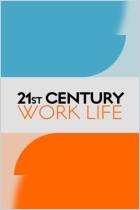Join getAbstract to access the summary!

Join getAbstract to access the summary!
Matthew Barby
The Remote Leader’s Guide to Managing a Team
Matthew Barby, 2020
What's inside?
What best practices work when you’re leading a remote team?
Recommendation
Remote work is becoming increasingly common. While some enjoy the flexibility that home-based office work can offer, others develop a sense of isolation and pressure to be available on a 24/7 basis. Matthew Barby, a London-based executive at HubSpot, has plenty of experience managing teams spread across continents and time zones. He offers some of the best practices he has developed over the years in an informative article. Leaders and employees who regularly interact with virtual team members can learn from his insights.
Summary
About the Author
Matthew Barby is the director of acquisitions at HubSpot and co-founder of the Traffic Think Tank.





















Comment on this summary